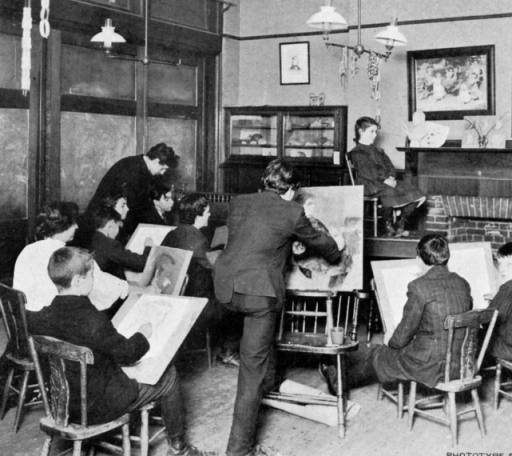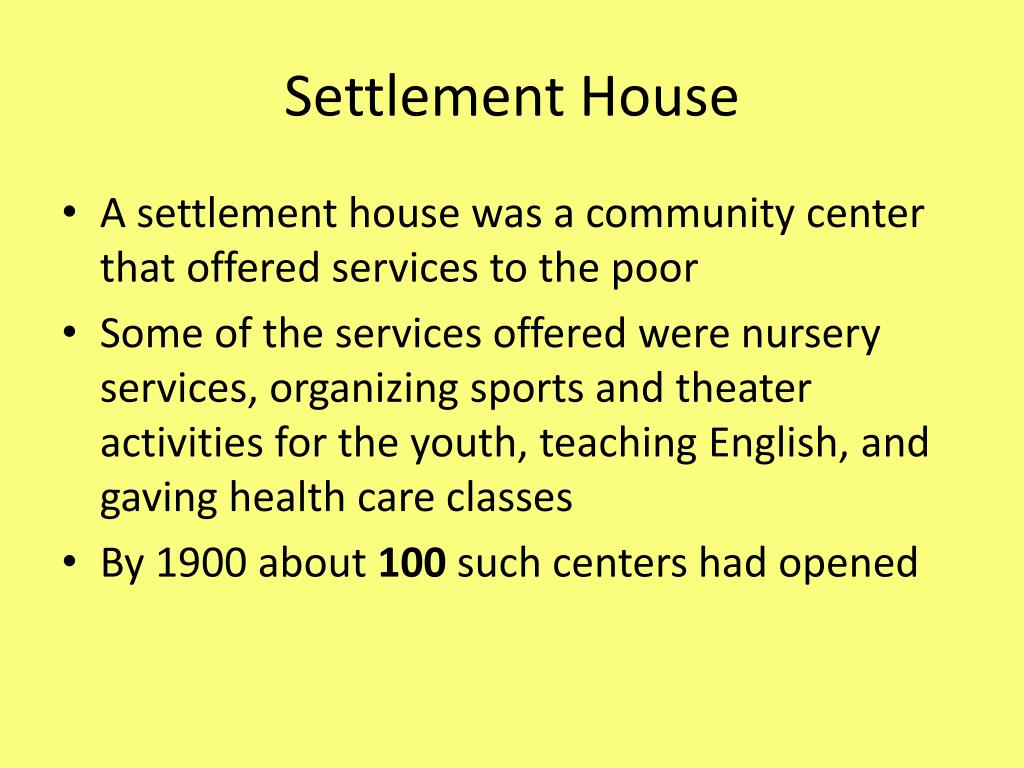Table Of Content

What's more, the creation of the VA Loan program lowered the barriers to entry for home ownership. Minimal Traditional homes were perfect for fulfilling the demand for scalable, affordable homes. In fact, it was the predominant residential architectural style in America until it was superseded by Ranch-style homes in the 1950s.
Israel approves plans for thousands of illegal settlement homes - Al Jazeera English
Israel approves plans for thousands of illegal settlement homes.
Posted: Mon, 26 Jun 2023 07:00:00 GMT [source]
Donate Today to Help Save the Places Where Our History Happened.
By 1910, there were more than 400 settlement houses in more than 30 states in America. At the peak in the 1920s, there were almost 500 of these organizations. The United Neighborhood Houses of New York today encompasses 35 settlement houses in New York City. About 40 percent of settlement houses were founded and supported by a religious denomination or organization.
Settlement Houses: How It All Began
The intention is to impress, and these homes are intended for entertaining. The style is intended to evoke a fairy-tale feeling, where imagination runs rampant. Red brick exteriors are common but always partnered with pastel-colored stonework or decorative painted wood.
Jane Addams and Hull House

They worked to remedy abuses by loansharks, pawnshops, and predatory installment buying practices. And always there were the activities which brought fun and fulfillment to life–music, art, theater, sociability and play. In some periods the program reflected national calamities such as severe depressions or world wars. As the century advanced, many activities pioneered by the settlement disappeared because they were taken over by public authorities (e.g. playgrounds, adult classes, kindergartens, health clinics). In other cases certain “evils” which occupied a major part of the settlement’s time were eliminated through protective legislation (e.g. tenement standards, municipal sanitation, child labor), leaving the agency free to move on to new priorities.
Access options
National negotiations finally establish that district councils are appropriate for Chest or Planning Council support, and neighborhood councils for settlement sponsorship ( ). Made efforts to improve sanitation and enforce health codes ( ) and established pioneer pasteurization station (1897). Dr. Alice Hamilton investigated Chicago typhoid epidemic (1902) and others assisted in New Orleans yellow fever epidemic (1905). Dr. Hamilton embarked on life work on control of lead and other poisons (1918). A personal account can be used to get email alerts, save searches, purchase content, and activate subscriptions.
Replies to “Settlement Houses: How It All Began”
The latter reformers were the more radical, viewing charity as at best a palliative that did not alter the basic conditions and causes of poverty, but merely treated its symptoms. But the stress on fellowship and cooperation, and on eradicating the causes of poverty rather than just the effects, reflected a loosely socialist ethos. Helped in formation of state and national public housing associations ( ). Gave leadership in ex periments in large scale building operations; agitated for state-sponsored slum clearance, and use of public funds for housing ( ).
Personal account
Then, copy and paste the text into your bibliography or works cited list.
White Rose Mission (Harlem, New York City, New York)
The movement was not financed by government funds and depended solely on the labor of charitable women and men. The first settlement house in the United States was Jane Addams’s Hull-House, founded in 1889. In 1893 Lillian Wald opened the Henry Street Settlement in New York City, and graduates of Wellesley College opened Denison House in Boston.
The interface between the Settlement House Movement and other social movements
Denison House’s vibrant programming and commitment to serving their local communities also illustrates the tensions between a desire to embrace diversity and an insistence upon immigrant assimilation. Denison House workers engaged daily with their Italian, Syrian, Armenian, Irish, and Eastern European Jewish neighbors—many of whom would themselves become volunteers. These ambitious women pushed back against anti-immigrant sentiment by embracing cultural diversity and working to eradicate the oppressive social and environmental conditions in poor neighborhoods. The first attempts to put the settlement idea into practice were made by young Englishmen of privilege and education. In 1867 an Oxford graduate named Edward Denison, the son of a bishop and nephew of a Speaker of the House of Commons, took lodgings in the slum district of Stepney.
It came at times when cities, states or the nation were ready to listen to the “distant early warning signals” sent by settlements, when there was a readiness to respond to need, to commit resources, or to undertake social innovations. Such a period occurred at the beginning in 1886 in London, when people of conscience and power were moved by what they heard from Toynbee Hall. It was most dramatically true in the U.S. in the Thirties, when the whole array of federal programs known as the “New Deal” burst into life to sustain a desperate nation. It was possible because settlements and others had patiently worked out the blueprints during the lethargic Twenties.
A one-and-a-half-story structure without dormers is typical, as is the clapboard or cedar siding, window shutters, and side shingles left unpainted to weather in. • Expanding economic opportunities through encouraging neighborhood entrepreneurship, minority business enterprises, and work with business such as the Urban Coalition. State (1914); for mothers’ pensions through state legislation (1916). Promoted Organization for Old Age Security (1925) and helped pass N.Y. HISTORY.com works with a wide range of writers and editors to create accurate and informative content.
Many als sponsored trips, international visits, and other enrichment to broaden educational horizons. A school for shut-in children was started at Hull-House in 1905, and for retarded at Henry St. in 1901. Settlements made studies of children with problems, and since the Thirties have provided leadership to schools for therapeutic groups. In the pioneer houses the residents comprised the staff and functioned under the social and educational leadership of the director. The residents were learners, living in a more or less continuous seminar. Their observations were expected to carry evidence about neighborhood problems to the larger society and to result in reform.
The pair visited Toynbee Hall, a settlement house on the city’s East End that provided much-needed services to poor industrial workers. Addams vowed to bring that model to the United States, which was in the early years of escalating industrialization and immigration. By 1901, hundreds of settlement houses dotted the crowded neighborhoods of America’s rapidly expanding cities. The settlement house movement was founded in London in 1884 and earned their name from the fact that their mostly college-educated, (and eventually) mostly female staff also lived on site, ‘settling’ among the local communities they aimed to serve. Addams, who came to understand political corruption while working in Chicago, saw that political democracy had failed to eliminate poverty and class distinctions; workers had no place to congregate, to organize, to enjoy cultural or social activities, or to learn. The second motivation she saw for the settlement was to answer a natural longing of people for fellowship and sympathy—a term that recurs in much of the writing of settlement leaders.
The best-known settlement house is perhaps Hull House in Chicago, founded in 1889 by Jane Addams with her friend Ellen Gates Starr. Lillian Wald and the Henry Street Settlement in New York is also well known. Both of these houses were staffed primarily by women and both resulted in many reforms with long-lasting effects and many programs that exist today. The settlement houses tended to be founded with secular goals, but many who were involved were religious progressives, often influenced by the social gospel ideals. Neighborhood centers in the U.S. were not generally pacifist, and during wars they worked to sustain neighborhood morale. On a point of contemporary interest, the Board of the National Federation wrote to the President in 1927, urging conciliatory action in regard to U.S. differences with Mexico and Nicaragua!

No comments:
Post a Comment